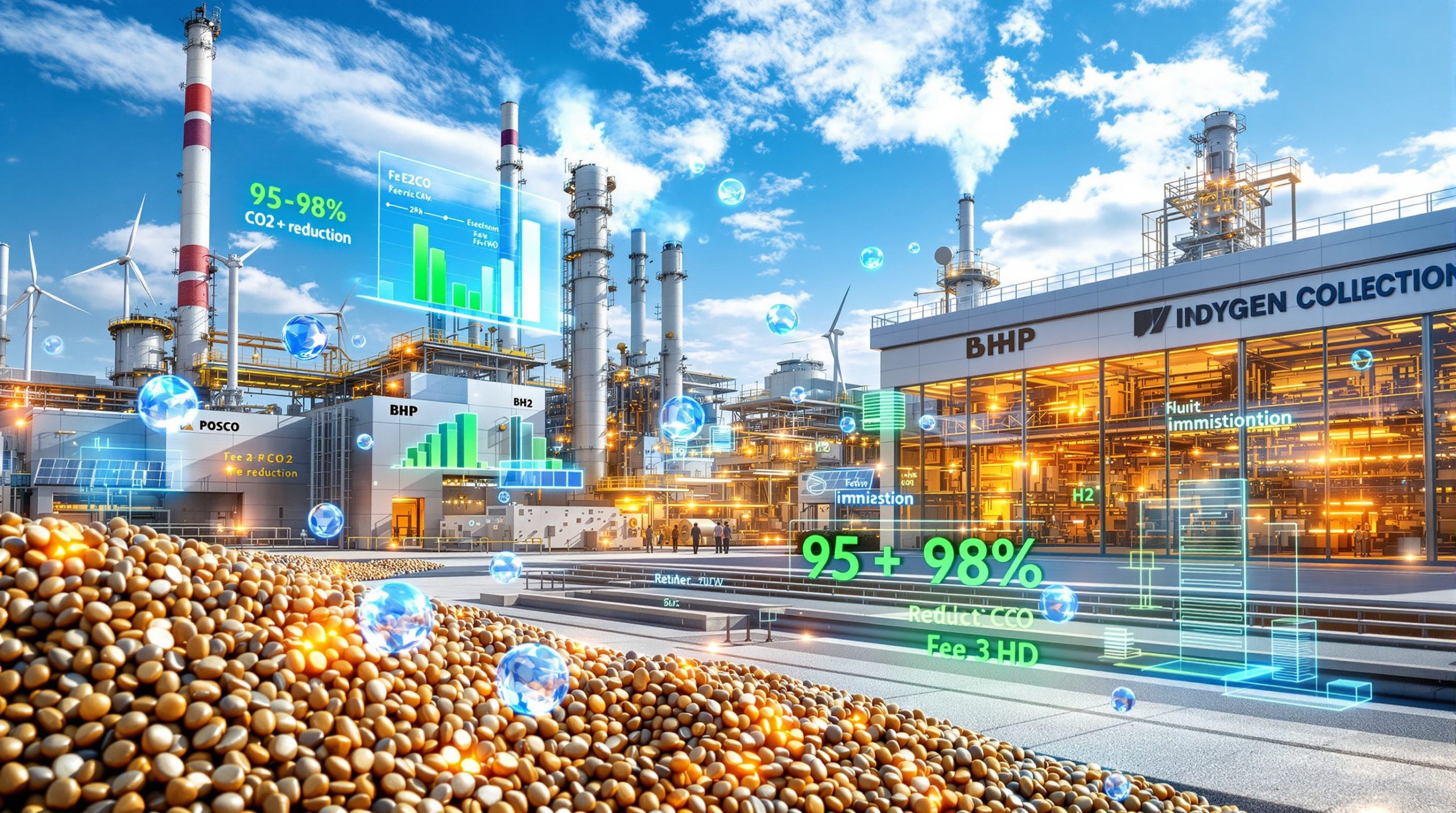The Evolution of Environmental Responsibility in Mining
The transformation of South Africa's gold mining sector represents a fundamental shift from traditional extraction methods toward comprehensive environmental stewardship. This evolution has accelerated as mining companies recognise that sustainable gold mining in South Africa must integrate directly into core business operations rather than function as separate compliance requirements.
DRD Gold exemplifies this integrated approach, having maintained profitability for 18 consecutive years while implementing environmental restoration models. The company's operations demonstrate that sustainability initiatives can enhance financial performance when properly embedded within business strategy rather than treated as operational add-ons.
Modern sustainable mining operations now prioritise ecosystem restoration, advanced waste management protocols, and long-term rehabilitation strategies that extend far beyond traditional closure requirements. This comprehensive approach addresses decades of environmental degradation while establishing new industry standards for responsible resource extraction across the continent.
Furthermore, these developments align with broader sustainable mining transformation initiatives emerging globally, demonstrating how local innovations contribute to international best practices.
How Are South African Mines Reducing Their Environmental Impact?
Renewable Energy Integration and Carbon Reduction
Contemporary mining operations increasingly leverage solar power installations and energy storage systems to minimise their carbon footprint while achieving significant cost reductions. DRD Gold's solar farm implementation demonstrates the economic viability of renewable energy integration, reducing operational costs by 9 to 15 rand per ton depending on operational timing.
The solar installation provides half of the facility's power requirements during optimal conditions, utilising a hybrid system combining solar generation with battery storage to manage intermittent renewable supply. This integrated approach addresses both environmental objectives and operational efficiency requirements.
Key renewable energy applications transforming the sector include:
- Large-scale solar farms powering processing facilities with integrated storage systems
- Hybrid power solutions combining renewable and traditional sources for consistent supply
- Energy-efficient equipment reducing overall consumption per ton processed
- Battery storage systems enabling 12-hour operational coverage during peak generation periods
The renewable energy transition in South African mining operations represents both environmental responsibility and strategic cost management. Solar installations can function as operational catalysts, particularly for facilities processing lower-grade materials where unit cost optimisation becomes critical for long-term viability.
Moreover, companies exploring decarbonisation benefits find that renewable energy adoption creates multiple value streams beyond environmental compliance.
Advanced Water Management Systems
Water conservation represents a critical component of sustainable gold mining in South Africa, with operations implementing sophisticated recycling and treatment systems to minimise freshwater consumption and prevent contamination of local water sources. Modern facilities utilise closed-loop systems that can achieve 70-80% water reuse rates while maintaining operational efficiency.
| Water Management Strategy | Environmental Benefit | Operational Impact |
|---|---|---|
| Closed-loop recycling | 70-80% water reuse | Reduced freshwater demand |
| Treatment facilities | Contamination prevention | Regulatory compliance |
| Monitoring systems | Early detection capabilities | Risk mitigation |
| Groundwater protection | Ecosystem preservation | Long-term sustainability |
These advanced water management systems incorporate real-time monitoring technologies that enable early detection of potential contamination events while optimising recycling efficiency. The integration of water conservation into core operational processes demonstrates how environmental stewardship can align with economic objectives.
What Role Does Technology Play in Sustainable Gold Mining?
Mechanisation and Automation Advances
Modern mining operations leverage advanced mechanisation to improve efficiency while reducing environmental disturbance. DRD Gold's DP2 project, described as potentially the largest engineering project in South African mining, demonstrates the scale of technological advancement occurring in the sector.
The DP2 facility represents a 600,000 tons per month capacity expansion, adding to existing 500,000 tons per month infrastructure. This modular plant design incorporates integrated metallurgical circuits with its own elution and zinc precipitation systems, enabling comprehensive gold recovery and smelting capabilities.
Technological innovations transforming the sector:
- Modular processing facilities enabling systematic capacity expansion
- Integrated smelting capabilities reducing transportation and processing risks
- Automated drilling and processing systems minimising human exposure
- Real-time monitoring systems optimising resource recovery efficiency
The facility's design incorporates space for additional reactor configurations that can increase agitation efficiency without carbon destruction, demonstrating ongoing research into extraction optimisation. This technological approach enables higher throughput rates essential for economically viable processing of lower-grade tailings materials.
Additionally, innovations such as hydrogen-powered mining trucks are beginning to complement these technological advances, offering zero-emission transport solutions for mining operations.
Innovative Extraction Methods
Tailings reprocessing represents an emerging approach that significantly reduces environmental impact compared to traditional extraction methods. This technique utilises previously discarded mine waste, transforming environmental liabilities into productive resources while reducing surface disruption.
DRD Gold processes gold from mine tailings exclusively, producing between 100,000 and 155,000 ounces of gold per annum from materials previously considered waste. This approach demonstrates how innovative extraction methods can address historical environmental damage while generating revenue.
The company's integrated approach incorporates zinc precipitation circuits and advanced carbon management systems designed to optimise extraction efficiency. Research continues into methods for increasing initial absorption energy without destroying carbon, potentially improving extraction rates through enhanced agitation techniques.
Key extraction innovations include:
- Tailings reprocessing systems converting waste into productive resources
- Modular plant designs enabling systematic throughput increases
- Integrated metallurgical circuits reducing processing steps and transportation
- Advanced carbon management preventing material degradation during processing
How Do Modern Operations Address Historical Environmental Damage?
Legacy Infrastructure Management
Addressing historical environmental damage requires comprehensive management of legacy infrastructure while implementing systematic contamination reduction strategies. DRD Gold's approach to the Brackband facility, operational since 1984, demonstrates proactive legacy management.
The company has reduced deposition rates on the aging facility from 2.1 million tons per month to 1.6 million tons per month, with plans to further decrease deposition to 250,000-300,000 tons per month over the next three to four years. This systematic reduction approach prepares the facility for eventual decommissioning while maintaining operational capacity.
Legacy management strategies include:
- Systematic deposition reduction on aging facilities
- Strategic distribution of waste across multiple facilities
- Planned facility decommissioning coordinated with new infrastructure commissioning
- Ongoing monitoring and adaptive management protocols
Ecosystem Restoration and Land Rehabilitation
Contemporary mining companies invest heavily in post-mining land restoration, transforming former mining areas into productive ecosystems that support biodiversity and community development. The industry increasingly adopts circular economy principles, treating waste materials as potential resources.
DRD Gold's environmental restoration model focuses on relocating mine waste from inappropriate locations to properly designed facilities, significantly reducing visual and environmental evidence of historical mining activities. The company's 800-hectare tailings facility with capacity for more than 800 million tons of mine waste demonstrates large-scale restoration infrastructure.
"Modern restoration projects can achieve near-neutral environmental impact when properly implemented with comprehensive planning, appropriate infrastructure design, and long-term monitoring protocols that extend operational life beyond 2040."
Restoration approaches include:
- Strategic waste relocation from inappropriate sites to properly designed facilities
- Integration of restoration objectives with operational infrastructure development
- Long-term planning horizons extending beyond traditional mining lifecycles
- Modular facility design enabling adaptive management and capacity expansion
These restoration efforts often incorporate mine reclamation innovations that represent the cutting edge of environmental rehabilitation technology.
What Are the Social Dimensions of Sustainable Gold Mining?
Community Engagement and Economic Development
Sustainable gold mining in South Africa prioritises meaningful community partnerships and long-term economic development that extends beyond the mine's operational life. Companies increasingly recognise that social investment must contribute to operational stability rather than function as separate corporate social responsibility initiatives.
The integration of social considerations into business models requires that community benefits align with operational objectives. This approach creates mutually beneficial relationships where community development supports operational stability while mining operations provide sustainable economic opportunities.
Community benefit initiatives include:
- Local procurement programs supporting regional business development
- Infrastructure development projects with lasting community value
- Employment creation aligned with operational requirements and local capabilities
- Skills development programs preparing communities for post-mining economic opportunities
Research by Orion Minerals demonstrates how sustainable mining investments can create long-term value for both communities and mining companies through integrated development approaches.
Integrated Business Model Approach
Successful sustainable mining operations embed environmental and social considerations directly into their business models rather than treating them as separate compliance requirements. This integration ensures that sustainability initiatives contribute to financial performance or risk reduction rather than functioning as operational costs.
The approach requires that environmental actions provide overlapping integrated value, where environmental initiatives contribute to operational efficiency and social investments create stable operating environments. Without this integration, sustainability programs function merely as corporate taxes rather than business enablers.
How Do Companies Measure and Report Sustainability Performance?
Environmental, Social, and Governance (ESG) Integration
Mining companies now implement comprehensive ESG frameworks that integrate sustainability metrics directly into operational management rather than treating them as separate reporting requirements. This integration ensures that sustainability performance directly influences business decisions and operational optimisation.
| ESG Category | Key Performance Indicators | Business Integration |
|---|---|---|
| Environmental | Energy efficiency per ton, carbon footprint reduction | Operational cost management |
| Social | Community investment effectiveness, local employment | Operational stability metrics |
| Governance | Transparency protocols, stakeholder engagement | Risk management systems |
The measurement approach emphasises unit-based efficiency metrics, such as cost per ton processed, rather than per-ounce production metrics. This focus enables optimisation of lower-grade material processing while maintaining economic viability through enhanced operational efficiency.
However, the implementation of comprehensive ESG frameworks faces challenges, as noted in research published in Science Direct, which highlights the complexity of balancing environmental protection with economic viability in mining operations.
Long-term Value Creation Models
Modern mining operations develop business models that create value through environmental restoration rather than simply minimising environmental impact. This approach transforms environmental obligations into revenue-generating opportunities while achieving superior restoration outcomes.
Companies increasingly recognise that traditional mine closure models, involving asset sales to undercapitalised operators, no longer meet stakeholder expectations or regulatory requirements. Modern approaches integrate closure planning with operational strategy, ensuring adequate capitalisation for comprehensive environmental restoration.
What Challenges Still Face Sustainable Gold Mining?
Technical and Economic Constraints
Processing lower-grade materials requires sophisticated technological solutions and significant capital investment to maintain economic viability. As head grades reduce over operational lifespans, revenue per ton decreases on flat gold prices, requiring continuous efficiency improvements to sustain profitability.
The challenge intensifies with the need for very large capital infrastructure to achieve the high throughput rates necessary for economically viable low-grade material processing. DRD Gold's $100-120 million annual growth capital expenditure over multiple years demonstrates the scale of investment required for sustainable operations.
Persistent technical challenges include:
- Maintaining economic viability with decreasing head grades over time
- Balancing high capital infrastructure requirements with operational efficiency
- Managing weather-related construction delays for large-scale projects
- Coordinating complex multi-facility construction and commissioning schedules
Regulatory and Licensing Complexities
Complex regulatory frameworks sometimes constrain the implementation of optimal sustainable practices, requiring innovative approaches to balance compliance with environmental protection objectives. Licensing processes for new facilities can create project timeline uncertainties that impact capital deployment strategies.
Environmental licensing requirements vary significantly based on facility location and design specifications, creating construction and design complexities that require comprehensive contingency planning. Companies must balance regulatory compliance requirements with operational efficiency objectives while maintaining project timeline integrity.
How Is the Industry Preparing for Future Sustainability Requirements?
Circular Economy Implementation
Mining operations increasingly adopt circular economy approaches, treating waste materials as potential resources and developing closed-loop systems that minimise external inputs and outputs. This approach transforms traditional linear mining models into regenerative systems that create value from previously discarded materials.
The circular economy model enables companies to unlock latent revenue-generating potential from mine waste while contributing to environmental restoration objectives. Even operations that do not achieve full profitability can make substantial contributions to closure costs when partially subsidised by restoration budgets.
Circular economy applications include:
- Tailings reprocessing for additional gold recovery and environmental restoration
- Waste material relocation from inappropriate sites to properly designed facilities
- Infrastructure design enabling multiple material processing and deposition cycles
- Revenue generation from environmental restoration activities
Regional Consolidation Opportunities
Industry consolidation enables more efficient resource utilisation and comprehensive environmental management across multiple operations. Companies with established infrastructure can provide consolidation services for regional operations while achieving economies of scale for sustainability investments.
The consolidation model addresses a critical industry challenge where mature operations traditionally sold assets to undercapitalised buyers unable to achieve responsible closure standards. Modern consolidation approaches ensure adequate technical expertise and financial resources for comprehensive environmental restoration.
DRD Gold's infrastructure development enables potential consolidation roles in operational areas, with facilities designed to process 3 million tons of material per month and achieve 200,000 ounces per year production capacity. This infrastructure capacity extends beyond single-operation requirements, enabling regional service provision.
What Does the Future Hold for Sustainable Gold Mining in South Africa?
Technology and Infrastructure Evolution
Emerging technologies promise enhanced sustainability improvements through advanced processing techniques and optimisation systems. Companies continue developing methods for improving extraction efficiency while minimising environmental impact through innovative equipment design and process optimisation.
Research focuses on increasing agitation efficiency without carbon destruction, potentially improving extraction rates through enhanced processing techniques. Infrastructure designs incorporate flexibility for technology upgrades and additional reactor configurations that can be implemented as innovations become commercially viable.
Future technological developments include:
- Enhanced extraction efficiency through improved agitation techniques
- Modular facility designs enabling systematic technology upgrades
- Integrated processing systems reducing material handling and transportation
- Advanced monitoring systems optimising operational efficiency in real-time
The integration of green energy mining design principles will likely become standard practice as companies seek to optimise both environmental performance and operational efficiency.
Global Market Integration and Standards
Sustainable gold mining in South Africa increasingly aligns with international certification standards and responsible sourcing requirements, positioning the industry for continued market access and premium pricing opportunities. Companies must demonstrate comprehensive environmental and social performance to access global markets.
The industry transformation addresses investor expectations for embedded sustainability performance rather than separate ESG compliance programs. Modern operations must demonstrate that sustainability initiatives contribute to operational efficiency and financial performance while achieving environmental and social objectives.
Market integration factors include:
- Increasing investor focus on integrated ESG performance within business models
- Evolution of regulatory requirements toward comprehensive environmental restoration
- Growing market demand for demonstrably sustainable gold production
- International certification requirements for market access and premium pricing
The transformation of South Africa's gold mining industry toward sustainable practices represents both environmental necessity and strategic business positioning. Success requires substantial capital investment, technological innovation, and comprehensive integration of sustainability objectives within core business operations.
Companies that achieve this integration position themselves for long-term viability in an increasingly conscious global marketplace while contributing to environmental restoration and community development. The model demonstrates that environmental responsibility and economic performance can align when properly implemented through embedded business model integration rather than separate compliance programs.
Disclaimer: The information presented includes forward-looking statements regarding production targets, infrastructure development timelines, and market conditions. Actual results may vary due to operational, technical, regulatory, and market factors. Investment decisions should consider comprehensive risk assessments and professional financial advice.
Are You Searching for the Next Breakthrough Gold Discovery?
Discovery Alert's proprietary Discovery IQ model delivers instant notifications on significant ASX mineral discoveries, transforming complex data into actionable insights that position subscribers ahead of market movements. Explore how major mineral discoveries have historically generated exceptional returns and begin your 30-day free trial today to secure your competitive advantage in identifying tomorrow's breakthrough opportunities.




